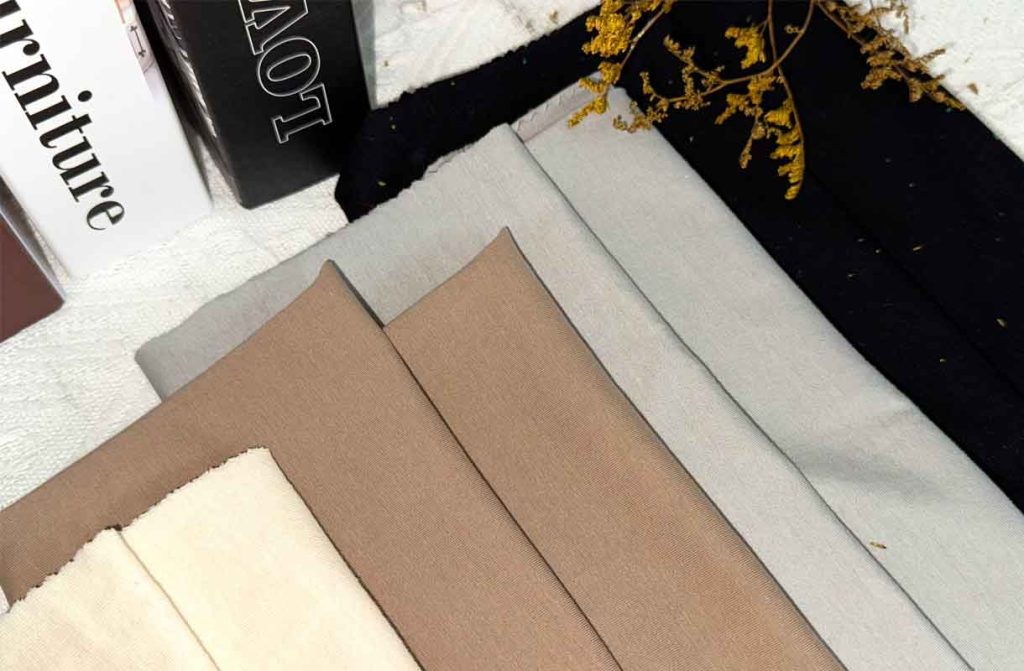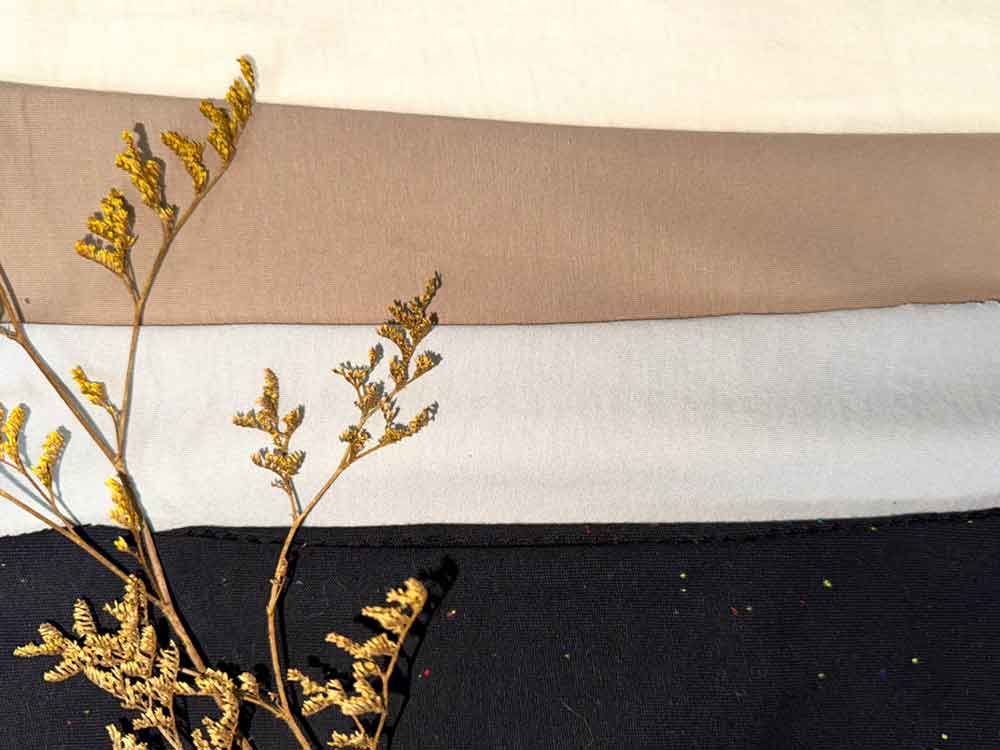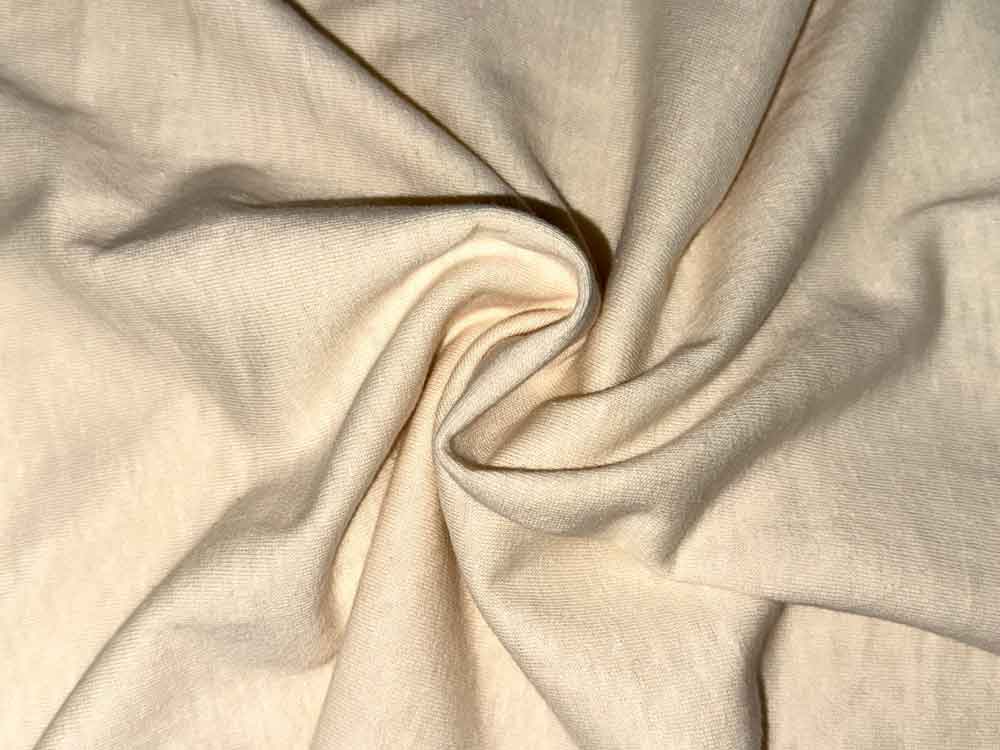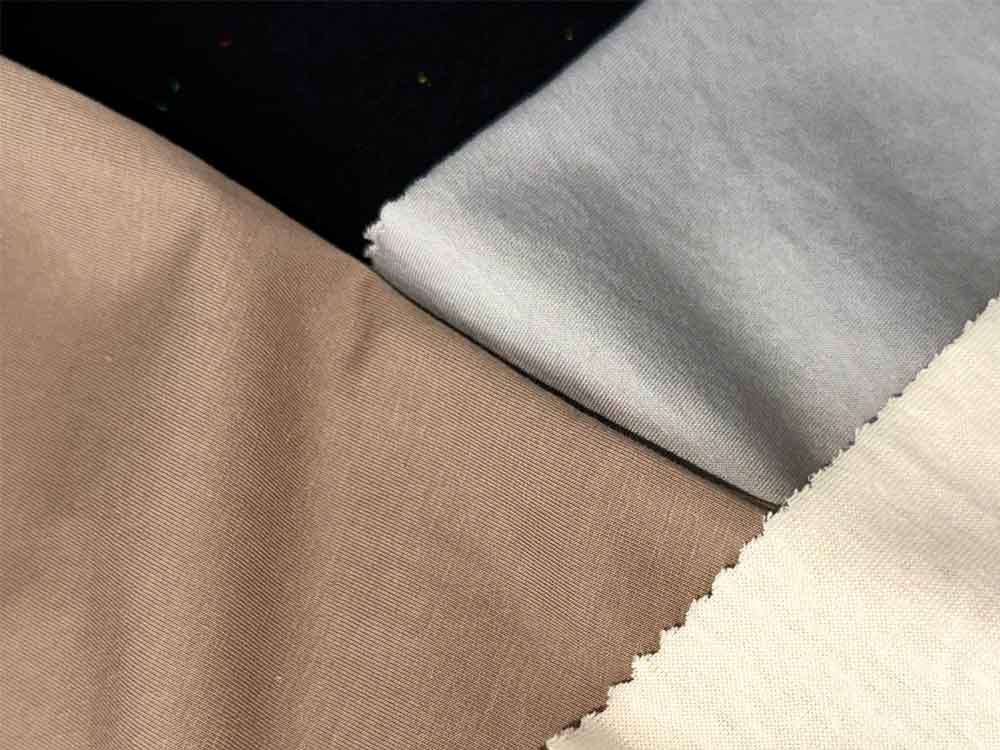World Class Textile Producer with Impeccable Quality

World Class Textile Producer with Impeccable Quality

Jersey knit fabric is widely used in the clothing industry because of its natural elasticity, comfort, fit, and flexibility. It is mainly made of wool. Although wool was used to make this fabric, nowadays, synthetic materials and cotton are mostly used for garments. Jersey knit originates from the island of Blouse. Due to its simple yet efficient structure, it was originally used in fishing garments. By the mid-1800s, Jersey knit fabric gained massive popularity with the textile importers. It was 1916 when a renowned designer named Coco Chanel took the first initiative to include Jersey knit in clothing. Her innovation and designs have motivated other designers to boost their creativity with this excellent fabric. Gradually, it became a fashionable textile that was used for garments later down the line. Now it has become a widely used fabric in men's clothing, athletic, work wear, and bedding.
Jersey is a soft and stretchable knitted fabric made by a circular knitting machine by combining yarns into loops. It is a textile fabric that is commonly made of wool which is versatile, flexible, durable, stretchable, and insulative. Nowadays, the Jersey knit fabric is also made from silk and synthetic materials.

Jersey knit is widely used for dresses, T-shirts, underwear, sportswear, children's clothing, and bedding. It is a single-knit fabric that is naturally elastic and soft. It is commonly known for its natural elasticity which can be achieved without the use of any stretchable fibers. After knitting, the fabric has a knitted look on the face side while the back side consists of an even horizontal finish.
There are many types of Jersey knit found on the market. Each has its characteristics that separate them from one another.
Single knit Jersey, also known as plain Jersey is the most commonly used for garments. It is relatively easier to produce as it requires a single set of needles. The fabric is lightweight which makes it excellent for men's underwear and T-shirts.

Double Jersey knit is also known as interlock jersey knit. What sets it apart from the single Jersey knit is the fact that it consists of two sets of needles which makes the fabric more durable and stretchable. Double Jersey knit is heavier than the regular jersey knit and is often used for heavier and thicker garments like sweatshirts, jackets, hoodies, and pants.
Wool Jersey knit was the starting of the Jersey knit fabric. It is soft and after knitting, the fabric becomes naturally elastic. Wool is a soft material which makes it easy to work with. Garments made from wool are excellent for winter wear as it is both insulating and warm. Wool Jersey knit is used to make gloves, scarves, and sweaters.
This Jersey knit is similar to wool Jersey knit. It also has a soft texture and the fabric is lightweight and breathable. The common garments made with this fabric are chinos, T-shirts, children's clothing, and office or causing wear.
Although a regular jersey knit has great natural elasticity, few garments often require the need for better elasticity and that is when stretch Jersey knit can show its magic. Unlike regular fabric, stretch Jersey knit has a mixture of wool, spandex, or polyester and sometimes elastic fibers which allows the fibers to stretch more freely without any damage. It is mostly used for ladies’ clothing.
It is a knit fabric that compiles from simple to complex patterns which can be printed using the jacquard machine. It is more fashion-focused and it allows the designers to work with their imaginations.
Unlike other Jersey knit fabrics, slub Jersey knit has a unique texture often made from the weaving patterns. It is indeed something out of the ordinary.
| Fabric | Jersey Knit |
| Fabric Composition | Wool, cotton, spandex, polyester, synthetic fibers |
| GSM | 140-200 or 150-210 GSM |
| Breathability | High |
| Wrinkling ability | High |
| Heat retention | Medium |
| Stretchability | High |
| Bubbling | Low |
| Washing temperature | Varies due to fabric |
| Producing country | Australia and China |
| Used for | Underwear, dresses, T-shirts, athlete wear |
As the main raw material for the Jersey knit is wool, there is no lack of comfort and softness in the garments. The fabric has a nice and soft finish which feels comfortable on the skin. This fabric is also made with cotton and a mixture of other synthetic fibers which has widened the variety of the fabric.
Thanks to the knitting patterns of making the Jersey knit which makes the fabric naturally stretchable. If we include synthetic fibers like spandex or polyester, we can make it more stretchable. The stretchability of the Jersey knit makes it perfect for close-fitting garments, activewear, and children's clothing.

Jersey knit is highly breathable and comfortable. The tight loops that are formed during the knitting process allow the air to pass through. The fabric is suitable for both summer and winter wear. The Jersey knit fabric that has a mixture of wool or cotton and synthetic fibers is great for moisture retention which makes it ideal for summer garments.
The fabric is highly durable due to its natural stretchability. Since the Jersey knit is made by using a single knitting process, the fabric holds its shape, and structure and doesn't show any signs of fraying. The fabric is suitable for frequent wear and washing.
The fabric is highly versatile which makes it ideal for a wide variety of designs, patterns, and prints. The Jersey knit fabric can be both lightweight and heavyweight. The lightweight jersey knit allows better air flow while the mid-heavy weight knit fabric is good for insulating and warm. There are more than 40 color options as well as different types of prints and textures to choose from.
The fabric is not wrinkled but it has good wrinkle retention ability which makes it great for travel wear and daily wear. Since the fabric is naturally stretchable, it doesn't form too many creases even after frequent washes. The chances of wrinkles are reduced if the fabric has a mixture of wool or cotton along with synthetic fibers. Not all but a few jersey knits have shown to curve up after frequent washes which can be fixed by ironing.
1.Apparel: T-shirts and tops, pants, leggings, underwear, activewear, lightweight and heavyweight jackets, dresses, skirts, children's clothing, and scarves.
2. Home texting: sheets, pillows, blankets.

3. Outdoor: tops and T-shirts, jackets.
4. Training: sports bras, workout leggings.
5. Accessories: hats, scarves, headbands.
Jersey knit is an amazing fabric because of its brilliant stretchability, softness, and comfort properties. It is one of the most favorable fabrics for many fashion designers. The versatility and the form factor provide the fabric with an outstanding look. There are both single and double Jersey knit which makes it perfect for all wearables in summer and winter. Although the beginning of Jersey knit started in the Channel Islands, nowadays China and Australia are the major producers and textile exporters of this excellent fabric. The elasticity, durability, and comfort make this fabric suitable for fashionable wear. Jersey knit fabric is most commonly used for garments like T-shirts, sweatshirts, blankets, pants, dresses, scarves, and headbands.